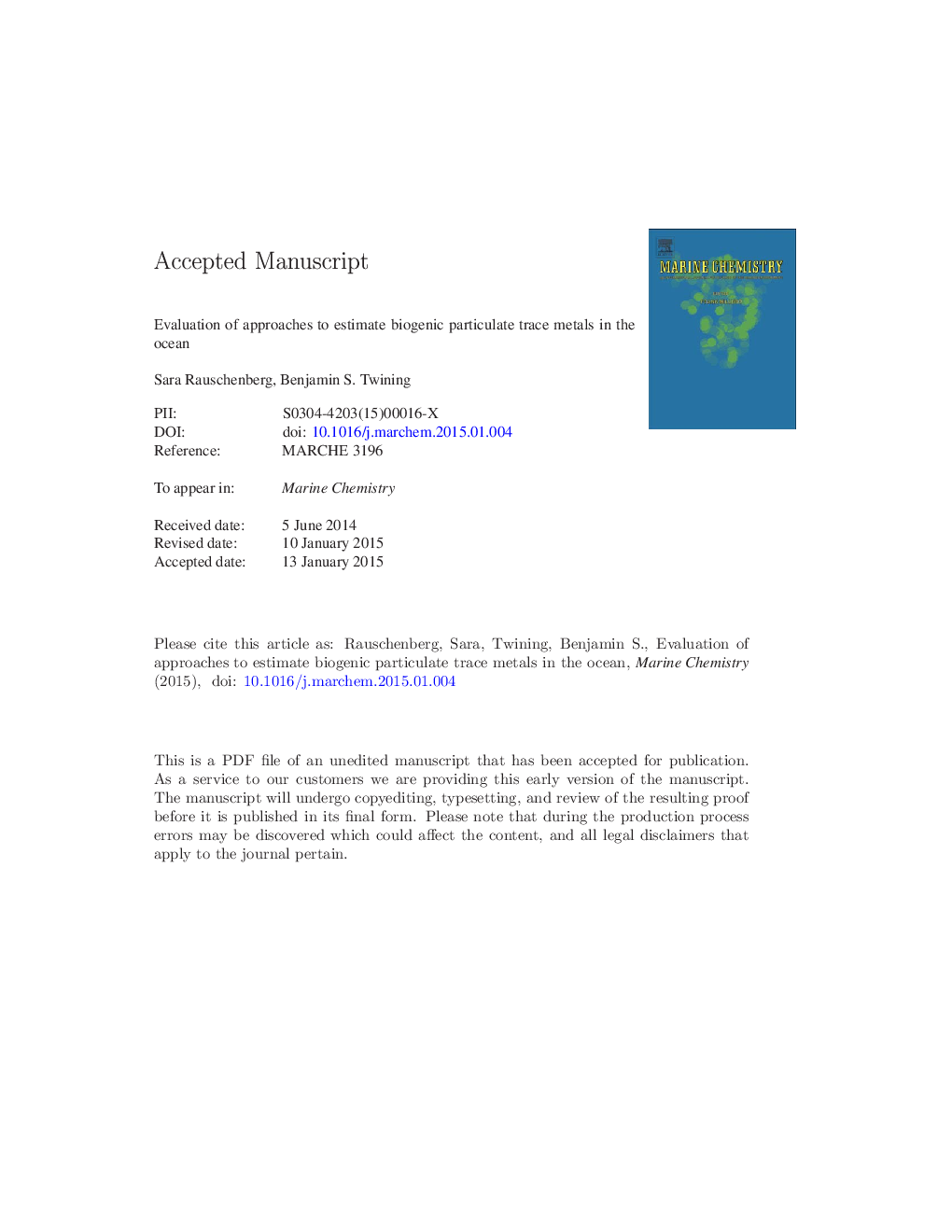| Article ID | Journal | Published Year | Pages | File Type |
|---|---|---|---|---|
| 7699422 | Marine Chemistry | 2015 | 43 Pages |
Abstract
The metal contents of marine plankton are of significant interest but are difficult to measure due to relatively low concentrations of labile particulate metals, as well as the high metal content of co-occurring authigenic and lithogenic particles. Surface ocean particle assemblages from the North Atlantic Ocean were analyzed with three bulk techniques commonly used to estimate biogenic metals: leaching of labile elements with an acetic acid and hydroxylamine solution (HAc); calculation of 'excess' metal concentrations from total particulate concentrations using assumed element stoichiometries for lithogenic materials; or soaking of particles with a complexing solution of EDTA and oxalate to remove adsorbed metals prior to total analyses. Procedural blanks were generally highest for the HAc leach, but HAc data were most consistent between elements and stations. Concentrations determined with HAc or through lithogenic correction were comparable at many stations, but calculated excess concentrations of Fe and Ti were also negative at many stations, demonstrating the significant uncertainty introduced by assumptions of lithogenic composition. Oxalate treatment leaves lithogenic particles largely intact and thus requires subsequent corrections for metal contributions from these as well, adding further uncertainty. Comparisons with direct measurements of elements in phytoplankton cells from the same stations demonstrate that all three bulk methods include metals beyond those associated with cells, primarily oxyhydroxides likely to be of most importance in high-iron coastal areas. The acetic acid-hydroxylamine leach is concluded to be the best approach to quantifying biogenic and associated labile particulate phases likely to be cycled through biota. Calculation of excess metal concentrations is highly dependent upon the lithogenic material chosen for the calculation, while the oxalate soak underestimates the concentrations of some labile elements in the biogenic phase and fails to remove refractory Fe, Al, and Ti.
Keywords
Related Topics
Physical Sciences and Engineering
Chemistry
Chemistry (General)
Authors
Sara Rauschenberg, Benjamin S. Twining,
